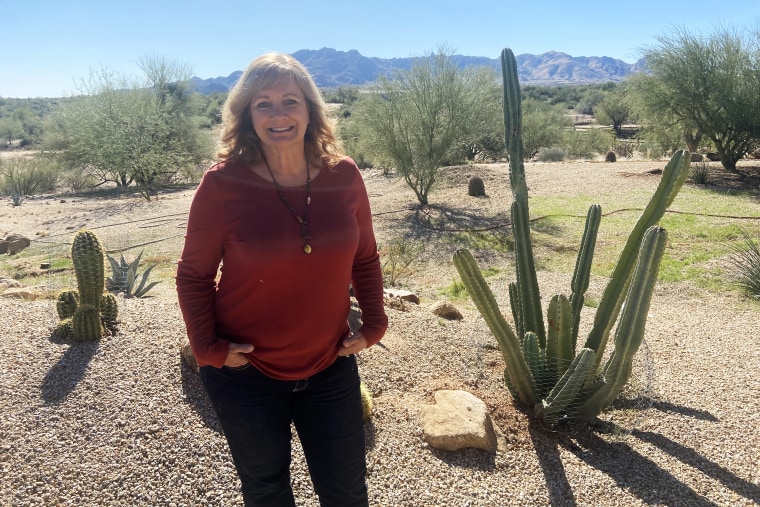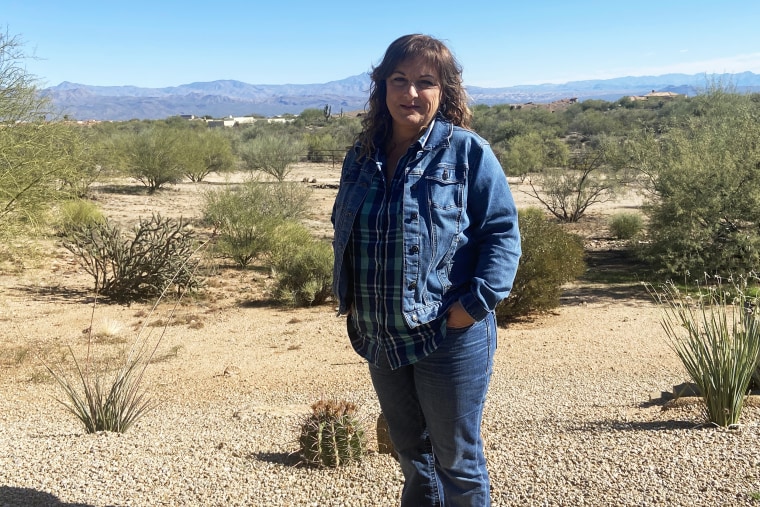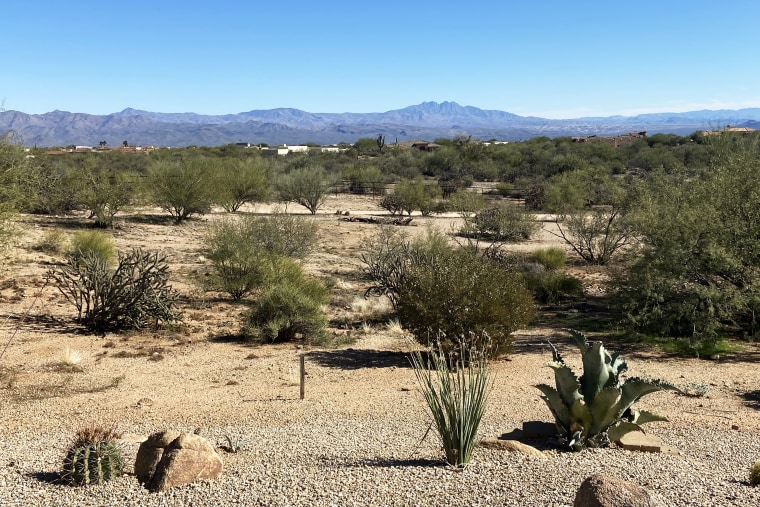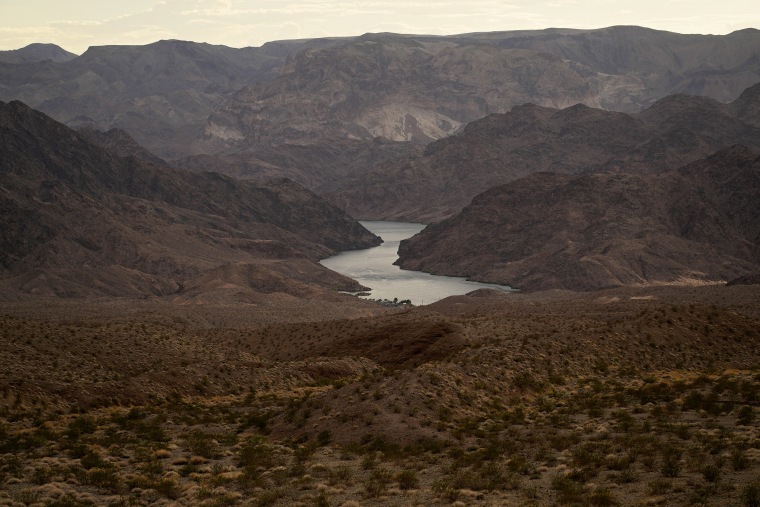RIO VERDE FOOTHILLS, Ariz. — More than 500 homes in this affluent desert community that boasts mountain views, ample trees and ranches hidden in the crooks of scrubby hills will run out of water by year's end as drought tightens its grip on the West.
Residents of Rio Verde Foothills outside Scottsdale have tried for years to resolve the looming crisis to no avail as the deadline to stop their water deliveries draws closer, forcing individual homeowners to find their own sources of water for drinking, bathing, washing dishes or doing their laundry.
“It’s going to be really ugly and terrible for our homeowners and landowners,” said Karen Nabity, who has lived in Rio Verde Foothills for seven years. “Some of us will borrow water from a friend’s well, others will have to pay a water hauler from far away.”

As climate change makes the western United States hotter and drier, the looming crisis in Rio Verde Foothills exemplifies how cities and states could be forced to vie for a diminishing amount of the natural resource.
The rural community of about 2,200 homes in unincorporated Maricopa County does not have its own water system, and most residents get their water from private wells on their properties. But more than 500 homeowners rely strictly on truck haulers to deliver water from a standpipe in Scottsdale. Another 200 whose wells are running dry periodically use the water haulers, as well, residents say.
But a year ago, Scottsdale notified Rio Verde homeowners that its water supply would be limited to only city residents starting Jan. 1, 2023, barring trucking companies from purchasing and exporting its water.
The notice came nearly a decade after Scottsdale first asked Rio Verde residents to search for an alternative water source, city officials said.
Scottsdale Water, the municipal utility, said the decision was one element of a larger contingency plan by the Central Arizona Project, which delivers water from the Colorado River to central and southern Arizona, to reduce its consumption. Scottsdale residents also were urged to reduce their usage as a first step toward more stringent restrictions.
The contingency plan was activated after the federal Bureau of Reclamation, which oversees Colorado River operations, declared a "Tier 1" shortage in August 2021 for the first time. The declaration reduces the amount of water Arizona, Nevada and Mexico can get from the river, which supplies water to about 40 million people in the West. The tier goes up as river levels go down, with Tier 3 being the most severe.
Some Rio Verde Foothills residents said they don't know how such an important issue could have dragged on so long without a resolution.
“It’s a priority because why wouldn’t we want to solve this problem,” said Jennifer Simpson, who was drawn to Rio Verde Foothills 23 years ago by its wide-open spaces.

Maricopa County officials said they can't fix the problem because they're not water providers. Scottsdale officials said they have no other option because their first commitment is to their own residents.
In Rio Verde Foothills, a sprawling community bisected by horse ranches and dusty gravel roads, the impending cutoff is likely to translate into much higher costs to have water shipped in from locations at least 60 miles away.
Some property owners thought they had solved the problem when they banded together to try to create their own water improvement district. But the plan was dashed this year when the Maricopa County Board of Supervisors voted down their petition, saying the majority of residents didn't want the proposed district because it could potentially lead to some of their properties being condemned to build a new water delivery system.

A Canada-based water company, Epcor Utilities, filed an application in October to supply Rio Verde Foothills with water, said Nick Debus, a spokesman for the Arizona Corporation Commission, a state agency that regulates private water.
If the project were approved, he said, the utility would have to acquire land, construct a standpipe and drill a new well, which could take two to three years.
Though water supply costs vary widely, rates for Rio Verde residents would increase exponentially to $20 for 1,000 gallons of water delivered, according to the application. The average Scottsdale resident pays $1.65 for 1,000 gallons and residents of nearby Glendale pay 33 cents for the same amount, according to KPNX, the NBC affiliate in Phoenix. Collectively, Rio Verde uses 48 million gallons of water a year, according to its residents.
Thomas Loquvam, general counsel for Epcor, said the commission asked the utility to provide water for residents, who would foot the bill for the project, resulting in the higher rates. Only homes built before 2024 would receive water from the proposed district, he added.
Although unfamiliar with the details, Rio Verde Foothills resident Adam Zingg said he prefers Epcor over a water improvement district because the latter would create another layer of government.
“We need as a community to find a solution,” he said. “I’m sure that if there’s no access to water, we’d be up in arms.”
Many Rio Verde Foothills residents say they feel abandoned.
“I’m frustrated and flabbergasted,” said Simpson, the 23-year resident. “We’re sitting here still waiting.”
